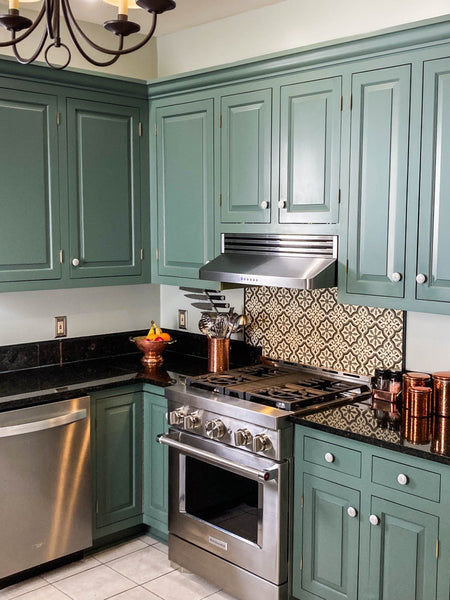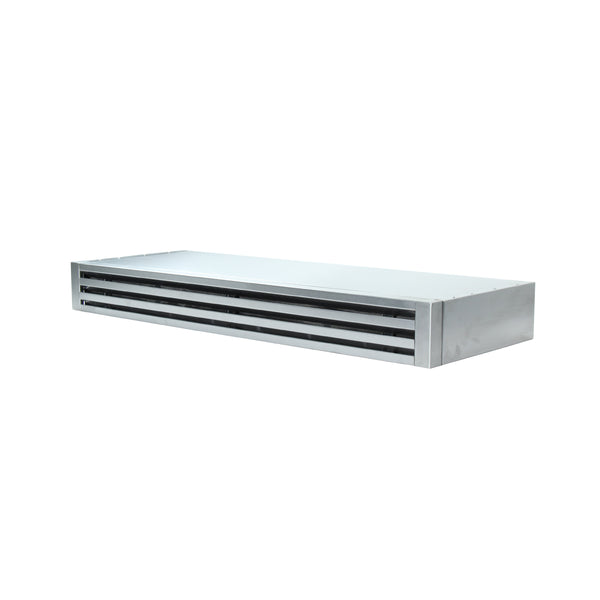So, you’re designing your outdoor kitchen and you want to make sure it lasts for years to come.
You ask yourself: Does an outdoor kitchen need to be covered?
Yes, to protect your outdoor kitchen for years to come, invest in a cover. Permanent outdoor covers include awnings, canopies, and pergolas. A permanent outdoor cover is especially practical if you don’t use your outdoor kitchen for much of the year. It can protect your kitchen from harsh weather and keep your appliances in good condition. It also provides shade for your guests while they enjoy great conversation and delicious meals.
If your budget is tight, you might also consider temporary patio table covers or grill covers to protect your outdoor furniture and appliances. The covers will keep dirt, moisture, bird droppings, and other debris off the surface. While it’s true that outdoor furniture and appliances are more durable than indoor furniture, they are not indestructible. They will wear down over time if uncovered.
You can also cover your grill, table, or other outdoor furnishings between uses. This is a good idea if it gets particularly cold at night or there is harsh weather. If you only use your outdoor kitchen a few times a week, then keep the temporary covers on as much as possible.
Permanent covers, like roofs or overhangs

If you’re considering a permanent cover, you have a lot of options. Popular roof covers include pergolas, louvered pergolas, awnings, and gazebos. Sometimes you’ll see flat roofs, often made from wood, like in the above photo.
When deciding on a permanent cover, one of the most important things to consider is its size. The cover needs to be large enough to cover your major appliances and furniture: grill, countertops, range hood, and your entertainment/lounge area.

Eight feet is a standard size for your ceiling. It won’t feel cramped and will accommodate most kitchens. Be wary of short ceilings as your outdoor space can fill with smoke and get dirty quickly.
If your roof is too tall, it won’t protect your kitchen from the elements effectively. You could easily go over budget by covering an area that you might not use in the future, too.
Also think about how many people you’ll have in your outdoor space. The more people you want to entertain, the larger your kitchen, and the outdoor cover, should be.
You might be able to combine an outdoor space with existing structures like your deck, under your deck, or an overhang.
Temporary covers for appliances and furniture
Temporary covers are great to have in any outdoor kitchen. Grill covers and countertop covers are two of the most popular. But you can find a cover for most outdoor appliances and furniture.
Make sure the cover protects the entire appliance. It only takes a small area exposed to air or water to accelerate rusting on a hood, water damage on a table…the list goes on.
If you have inclement weather during the outdoor season, a temporary cover can help protect your appliances in between uses.
For the winter or non-grilling/entertaining season
A permanent cover is best for your outdoor kitchen if you won’t be using it year-round. Before winter hits, put temporary covers over your outdoor furniture and appliances. Move most of your outdoor furniture to a shed so that you don’t have to worry about covering it. For heavy furniture like tables, you can find covers online.
Here is a patio table cover and grill cover from Amazon that might work for you.
Remember to winterize your outdoor kitchen before winter starts. This includes things like draining water lines, storing your furniture, cleaning your grill and cabinetry, and more. Here’s a complete guide on preparing your outdoor kitchen for winter.
Covering an enclosed vs. open outdoor kitchen

One scenario where you may not need to cover your outdoor kitchen is in a warm climate with an enclosed outdoor kitchen. In an open kitchen, UV rays can discolor the furniture and countertops over time.
If you live in a colder climate, you might think an enclosed outdoor kitchen is enough coverage. But don’t be lulled into this false sense of security. It’s best to cover everything because wind can still blow rain and snow on the furniture. Over several months, this can wear down your furniture or cause damage.
Of course, don’t forget about other items in your outdoor kitchen. Any decor should be stored away until the weather becomes favorable. This includes knick-knacks, wall decor, and the like. If in doubt, store it!
As far as cooking goes, you’ll trap more cooking fumes and grease in an enclosed kitchen. Proper ventilation is vital to ensure you breathe clean air all summer long. It’ll also keep pesky grease stains and oils from sticking to your walls and ceiling.
In an open kitchen, smoke and cooking odors won’t be as irritating while you’re cooking. But we still recommend an outdoor vent hood to keep surfaces in your outdoor kitchen grease and smoke-free.
Choose the right materials for your outdoor kitchen
Part of building the perfect outdoor kitchen is choosing the right materials. Some appliances can last decades – yes, even in an outdoor kitchen!
Choosing the right materials also increases your margin of error if you neglect your kitchen for a year or have particularly harsh weather one year. To protect your outdoor kitchen, invest in durable, corrosion-resistant materials that can stand up to the elements.
Two of the most durable options for countertops are granite and stone. Avoid softer metals like marble – it won’t handle harsh weather well. Wood or composite wood can work well for tables and chairs since you can move those into a shed for the winter. But it’s not recommended for outdoor countertops since wood doesn’t react well with water.
If your wood furniture is too large to move, make sure it’s treated properly and cover it before it gets rained or snowed on.
Is it already a little damaged? Maybe you notice a chip in the finish or faded color. Before you give up on your furniture, you can try reapplying the finish.
If you’re applying the same finish, just clean the furniture thoroughly before applying the stain. If you’re applying a different finish or the current one is quite worn down, sand it off completely first. Read more about refinishing wood furniture for outdoor use here.

When should I uncover my outdoor kitchen?
If you live in a volatile climate, it’s a little tricky to know when exactly to uncover it. Take a look at the 10-day weather forecast and make sure it’s sunny every day before uncovering your entire kitchen.
If it’s still spring, you might consider waiting to pull all your outdoor furniture from storage.
Here in Utah, you might have one week of 50º sunny weather followed by a week of 20º weather with snowstorms. Usually, around late May it’s safe to uncover your outdoor kitchen in Utah. Every area is different though!
Ask your local friends if they have an outdoor kitchen. Often the best advice comes from word of mouth. Here are some questions you could ask them.
- Do you keep your outdoor kitchen covered or uncovered?
- When do you usually uncover your outdoor kitchen?
- When do you usually cover your outdoor kitchen?
- Where do you like to store your outdoor furniture?
Whatever you’re curious about, ask away!
That’s all for our article “Does an outdoor kitchen need to be covered?” We hope it helped you out! For more content on outdoor patios and kitchens, check out the articles below!













